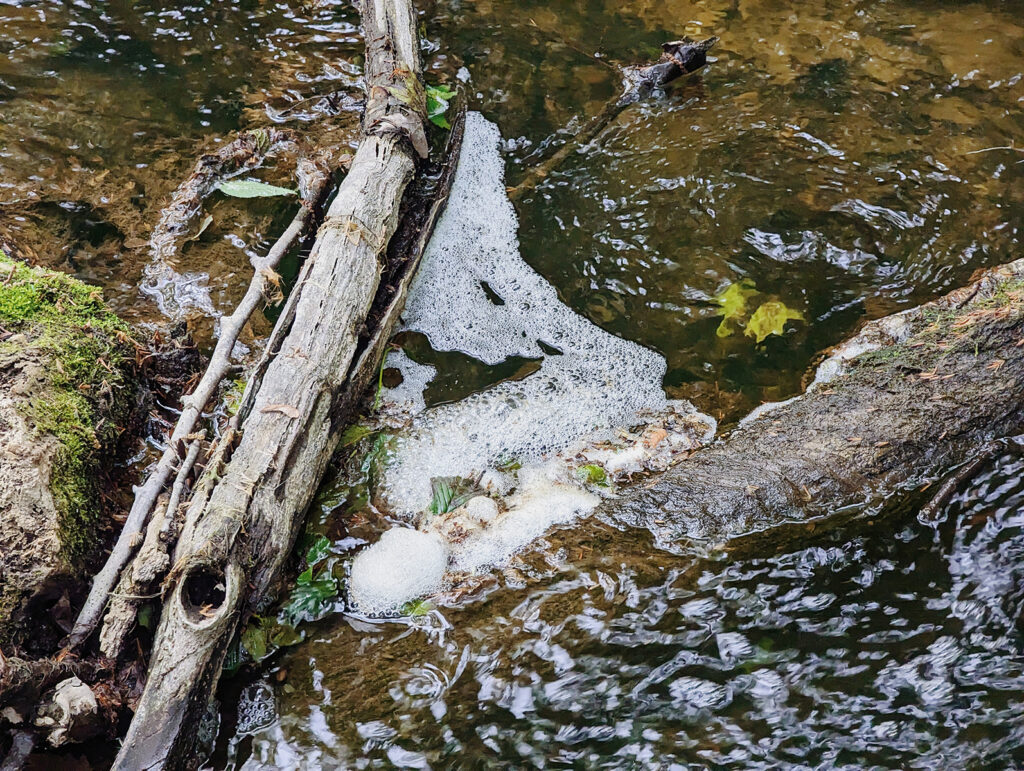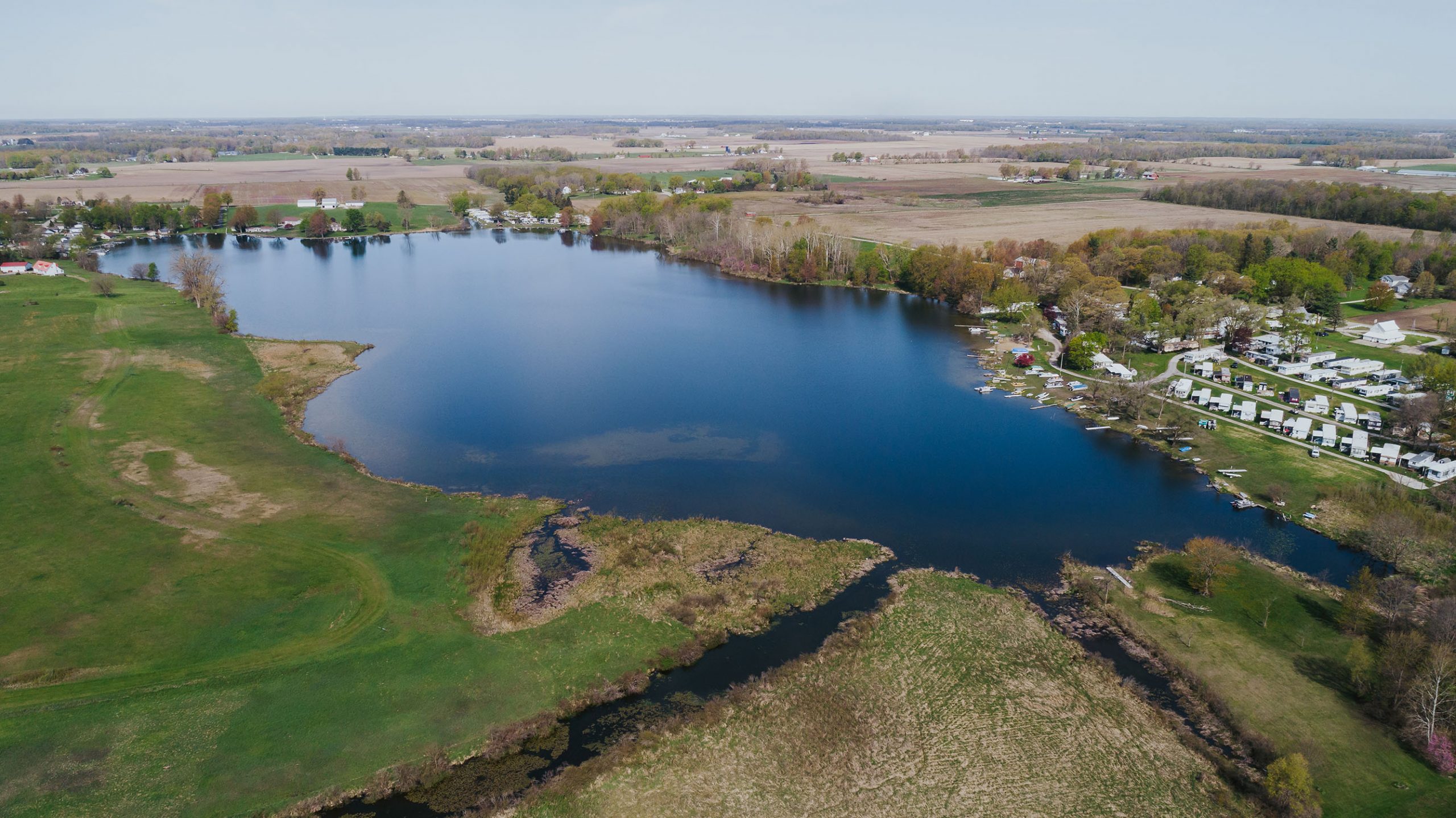Why is there foam in in my river?
You’ve seen foam forming near ocean shores, but how about in our local lakes and streams?
The foam can be a concerning sight if you are unaware of its origin. The cause of this natural occurrence is sometimes assumed to be a pollutant like laundry detergent. Read on to learn how to identify natural river foam!
Surprisingly, foam is usually not from soaps or other manmade chemicals. If not laundry detergent, what is the real cause of foam? The answer is rather simple: decomposing plants!
When plants die and begin to break down, oils are released, and rainwater carries them into lakes and streams. However, rainwater also collects organic matter on its way to a lake or stream. Similar to making tea, the water passes through the soil and absorbs the organic matter, darkening like a cup of tea. Plant oils and nutrients reach the water where they float and mix on the surface.

These plant materials can also change the physical nature of water. Dissolved organic carbon (DOC) is a compound found in this mix of decomposed matter. DOC acts as a surfactant, breaking the surface tension of water. A common example of a surfactant is soap, and similar to soap, DOC facilitates bubble formation as water is agitated. Wind and wave action introduce air into the organically enriched water, creating tiny air bubbles that collect along the shoreline or in low-flow areas.
Although foam production is a natural process, in some cases, it can be a product of pollution. Many manmade substances like sewage, cleaning products, and fertilizers can end up in our lakes. Each of these substances have the same bubble-forming properties as decomposing plants. You can differentiate naturally occurring and synthetic foam by these characteristics:
- Color
- Scent
- Texture
- Proximity to a possible pollution source
Synthetic materials will often form a sticky foam with a pure white color (although color can be affected by debris). Natural foam typically is a light texture, not sticky to the touch, and is tinted brown. This color is caused by tannin, a substance that also gives wood its brown color. Natural foam usually has a fishy or earthy scent whereas pollutants typically have a smell indicative of their source. If you see foam that you believe to be unnatural, consider the body of water and the possible surroundings that could be contributing pollutants.
Next time you see brown foam piling up on the shoreline, remember: even though it can look unpleasant, it’s likely a natural product of decomposing plant matter! If you would like to decrease manmade foams in your local lakes and streams, avoid using synthetic chemicals on outdoor surfaces and if you have a septic tank, be sure that it is well-maintained.

Foam is a natural sign of nutrients entering waterways
But too many nutrients can be a problem! Learn more about how nutrients impact your local lakes and streams